Phellodon niger (Fr.) P. Karst. - Black Tooth
Phylum: Basidiomycota - Class: Agaricomycetes - Order: Thelephorales - Family: Bankeraceae
Distribution - Taxonomic History - Etymology - Identification - Culinary Notes - Reference Sources
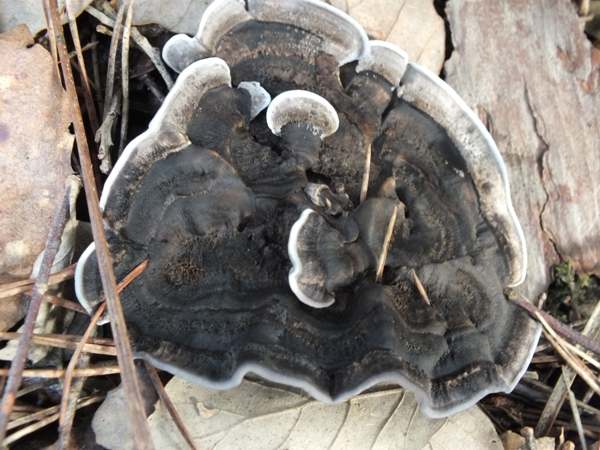
This tough hydnoid (toothed) fungus could easily be mistaken for the charred end of a post standing slightly proud of the forest surface. Black Tooth is its common name, but don't be fooled: the teeth on the underside of the caps are not black but a pallid blue-grey when young and mid grey later.
If asked to give this fungus a more descriptive common name I would suggest that the Charcoal Hedgehog is quite an appropriate label for this spiny species of pine woodlands.
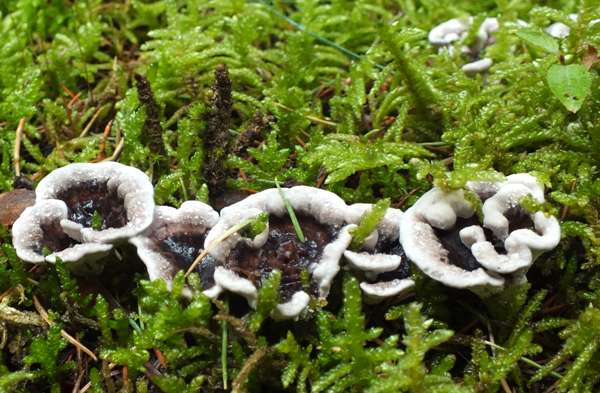
Distribution
Phellodon niger is a rare find in Britain and Ireland but a more frequent sight in parts of southern Europe. This species is also recorded in North America.
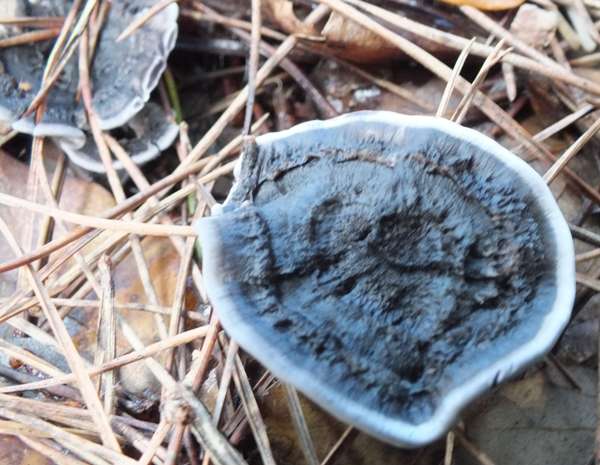
Taxonomic history
In 1815 the great Swedish mycologist Elias Magnus Fries described this species, giving it the name Hydnum nigrum. In 1881 Finnish mycologist Petter Adolf Karsten (1834 - 1917) transferred the Black Tooth fungus to the genus Phellodon, renaming it as Phellodon niger.
Common synonyms of Phellodon niger include Hydnum nigrum Fr., and Hydnellum nigrum (Fr.) P. Karst.
Phellodon niger is the type species of the genus Phellodon, in which there are currently only five species recorded in Britain.
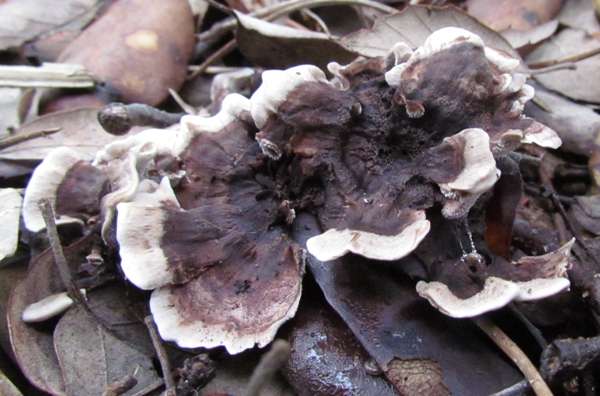
Etymology
In 1881 the genus Phellodon was circumscribed by Finnish mycologist Petter Karsten; the generic name comes from phell-meaning cork, and -don meaning tooth. This is indeed a tough, cork-like tooth fungus. The specific epithet niger means black, of course.
Identification guide
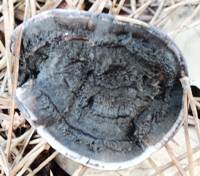 |
CapFlat topped or occasionally with a shallow depression, the upper surface is blue-black becoming black, retaining a white rim. The cap surface is rough, often gnarled and pitted, and most often concentrically zoned with a sharp, slightly striate margin. Ranging from 3 to 8cm across, larger specimens tend to have lobed and wavy margins. Fruitbodies usually appear in small groups so that several caps become fused together. |
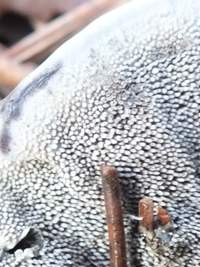 |
SpinesThe lower (fertile) surface of this hydnoid fungus is covered in pale blue-grey spines up to 3mm long; the spines are decurrent to the stem. |
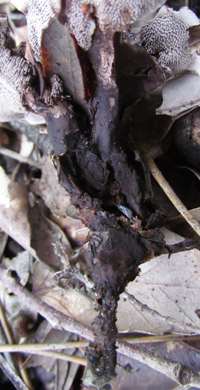 |
Stem2 to 5cm long and 1 to 2cm in diameter, the stem is more or less cylindrical, black and tomentose; it is often entirely buried in leaf litter. |
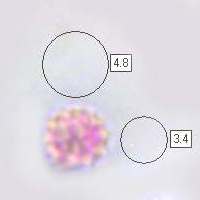 |
SporesEllipsoidal to subglobose, spiny, 3.5-4.5 x 2.5-3.5μm (excluding spines, which are up to 0.5um tall), hyaline.
Spore printWhite. |
Odour/taste |
Not significant. |
Habitat & Ecological role |
Mycorrhizal, in coniferous woodlands, very often under pines. |
Season |
September to November in Britain and Ireland. Further south in Europe its fruiting season is extended into the New Year. |
Similar species |
Several other members of the Phellodon genus occur in similar habitats. |
Culinary Notes
Phellodon niger is a tough inedible fungus that often has twigs and conifer needles embedded in its caps. Even the woodland bugs seem to find this fungus hard to get their teeth into. It is unclear whether Black Tooth contains toxins, and we know of no recipes for this rather uncommon tooth fungus.
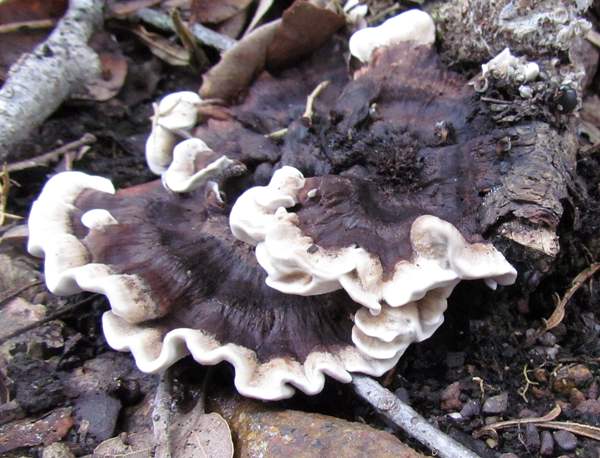
Reference Sources
Fascinated by Fungi, 2nd Edition, Pat O'Reilly 2016, reprinted by Coch-y-bonddu Books in 2022.
British Mycological Society (2010). English Names for Fungi
Dictionary of the Fungi; Paul M. Kirk, Paul F. Cannon, David W. Minter and J. A. Stalpers; CABI, 2008
Taxonomic history and synonym information on these pages is drawn from many sources but in particular from the British Mycological Society's GB Checklist of Fungi.
Fascinated by Fungi. Back by popular demand, Pat O'Reilly's best-selling 450-page hardback book is available now. The latest second edition was republished with a sparkling new cover design in September 2022 by Coch-y-Bonddu Books. Full details and copies are available from the publisher's online bookshop...


